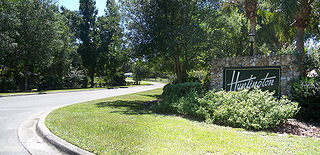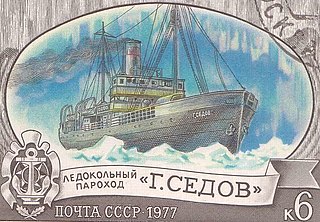
Stockton is a census-designated place (CDP) in Worcester County, Maryland, United States. The population was 92 at the 2010 census. It is part of the Salisbury, Maryland-Delaware Metropolitan Statistical Area.

The Second Happy Time was a phase in the Battle of the Atlantic during which Axis submarines attacked merchant shipping and Allied naval vessels along the east coast of North America. The First Happy Time was in 1940–1941 in the North Atlantic and North Sea. Adolf Hitler and Benito Mussolini declared war on the United States on 11 December 1941, and as a result their navies could begin the Second Happy Time.
Concrete ships are built primarily with ferrocement hulls, reinforced with steel bars. This contrasts against more traditional materials, such as pure steel or wood. The advantage of ferrocement construction is that materials are cheap and readily available, while the disadvantages are that construction labor costs are high, as are operating costs. During the late 19th century, there were concrete river barges in Europe, and during both World War I and World War II, steel shortages led the US military to order the construction of small fleets of ocean-going concrete ships, the largest of which was the SS Selma. United States Maritime Administration (MARAD) designation for concrete ships-barges was Type B ship. Few concrete ships were completed in time to see wartime service during World War I, but during 1944 and 1945, concrete ships and barges were used to support U.S. and British invasions in Europe and the Pacific. Since the late 1930s, there have also been ferrocement pleasure boats.

CSS Baltic was an ironclad warship that served in the Confederate States Navy during the American Civil War. A towboat before the war, she was purchased by the state of Alabama in December 1861 for conversion into an ironclad. After being transferred to the Confederate Navy in May 1862 as an ironclad, she served on Mobile Bay off the Gulf of Mexico. Baltic's condition in Confederate service was such that naval historian William N. Still Jr. has described her as "a nondescript vessel in many ways". Over the next two years, parts of the ship's wooden structure were affected by wood rot. Her armor was removed to be put onto the ironclad CSS Nashville in 1864. By that August, Baltic had been decommissioned. Near the end of the war, she was taken up the Tombigbee River, where she was captured by Union forces on May 10, 1865. An inspection of Baltic the next month found that her upper hull and deck were rotten and that her boilers were unsafe. She was sold on December 31, and was likely broken up in 1866.

National Road 82 is a single carriageway road in southern Greece. It connects Pylos with Sparti via Kalamata. It passes through the regional units Messenia and Laconia, on the Peloponnese peninsula. Its length is 110 km.

Stannington ward is one of the 28 electoral wards in the City of Sheffield, England. It is located in the western part of the borough, including some westernmost suburbs of the city; most of the land is rural. The population of the ward at the 2011 Census was 18,222.
Park Hill is a neighborhood in Louisville, Kentucky, United States, located just west of Old Louisville. Its boundaries are the CSX railroad tracks to the east, Hill Street to the south, Twenty-sixth street to the west, and Virginia Avenue and Oak Street to the north. In the 19th century, the southwestern farmland portion of the neighborhood was known as the Cabbage Patch, the citizens of which inspired Alice Hegan Rice's 1901 children's novel Mrs. Wiggs of the Cabbage Patch.

Huntington is an unincorporated community in Marion County, Florida, United States, west of Baseline Road, between Ocala and Belleview. The community is part of the Ocala Metropolitan Statistical Area.

The Georgiy Sedov was a Soviet ice-breaker fitted with steam engines. She was originally the Newfoundland seal fishery support vessel Beothic and was renamed after Russian captain and polar explorer Georgy Yakovlevich Sedov in 1915.
The Girdletree Barnes Bank is located on Snow Hill Road between Snow Hill and Stockton, Girdletree, Maryland, United States. The bank includes a walk-in vault and antique teller cages. The Girdletree Barnes Bank now serves as the Girdletree Barnes Bank Museum.

Gretton railway station was a railway station near Gretton, Northamptonshire. It was on the Nottingham direct line of the Midland Railway of the Midland Railway. The steps up to the former platforms can still be seen, but the station building itself is in private ownership.

Monsanto Forest Park is a municipal protected forest in Lisbon, Portugal, the largest green patch in the city, with almost 1000 ha (10 km2). It offers a well diversified tree-covered area to the Portuguese capital.

Thomas Winsmore was an 1890 schooner that sailed in the coastwise trade, bringing coal from Philadelphia to northern ports, and returning with cargoes of lumber. According to one source, the ship operated free of mishaps for almost 22 years. However, the ship was known for its "troublesome" crew; and in one instance, it appears a fight resulted in the death of one crew member, Jack Kalfus.

Quidnick is a village within the town of Coventry, Rhode Island.

Clay Township is a township in Hardin County, Iowa, United States.
Mason’s Hill is a geographic eminence located in Fairfax County, Virginia. Its summit rises to 397 feet (121 m) above sea level.
Fabius Township is an inactive township in Schuyler County, in the U.S. state of Missouri.
Roy A. Jodrey was a bulk carrier owned by Algoma Central Railway. Named in honour of Roy A. Jodrey who was a director and shareholder of the company, the ship was launched and entered service in 1965, one of four ships constructed for the company to access ports on the Great Lakes and Saint Lawrence Seaway too small for use by the larger lake freighters. On 20 November 1974, Roy A. Jodrey struck Pullman Shoal in the St. Lawrence River in Alexandria Bay, New York. The vessel made it to the United States Coast Guard Station at Wellesley Island and tied up. At 03:00, the bulk carrier sank in 77 metres (254 ft) of water, with its entire crew reaching safety. No attempt to salvage the ship was made, but Algoma did try to salvage the vessel's cargo of iron ore, which led to the death of a diver. Roy A. Jodrey became a technical scuba diving site, whose difficulty has led to the deaths of a some of those who have attempted it.
Badshot Lea Long Barrow, also known as Farnham Long Barrow, was an unchambered long barrow located near the village of Badshot Lea in the south-eastern English county of Surrey. It was probably constructed in the fourth millennium BCE, during Britain's Early Neolithic period.
Lakeside Bridge was a steam cargo ship built in 1919 by Submarine Boat Company of Newark for the United States Shipping Board (USSB) as part of the wartime shipbuilding program of the Emergency Fleet Corporation (EFC) to restore the nation's Merchant Marine. The vessel was chiefly employed on the East Coast and Gulf to Europe routes throughout her short career. In December 1920 the vessel went ashore in strong gale and was wrecked without loss of life.











